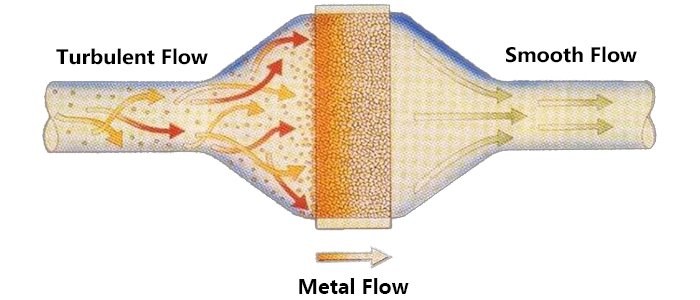Foundries are crucial to the manufacturing industry, as they produce a wide range of metal castings used in various sectors such as the automobile, aerospace, construction, and healthcare industries. The process of casting, however, is not without its challenges – one of the most prominent being casting blisters. Fueled by gases trapped inside the molten metal, casting blisters are common defects that result from poor casting practices, causing the surface of the casting to be mottled, porous, and rough. This article will discuss the causes of casting blisters and the solutions to prevent them by focusing on the role of foam ceramic filters.
Causes of Casting Blisters
Casting blisters occur due to several factors, including poor casting practices, mold design, and mold compaction. One of the most critical causes of casting blisters is gas entrapment, where gases such as oxygen, nitrogen, and hydrogen get trapped inside the molten metal. This happens when the molten metal absorbs the gases during the pouring process or when the gases are produced through chemical reactions, leading to the formation of blisters on the casting surface. Several factors can contribute to gas entrapment, including the metal temperature, pouring speed, turbulence, mold permeability, and the mold’s design.
Preventive Measures
Luckily, several measures can be implemented to prevent blister formation during casting. First and foremost, it is essential to have a high-quality mold design and a uniform and well-compacted mold before pouring the molten metal. The mold’s permeability must also be controlled, as a low permeability mold can lead to gas entrapment and the formation of blisters. Ensuring the metal temperature is optimal and the pouring speed is moderate can also help prevent blister formation. Furthermore, an effective solution is to use foam ceramic filters in the casting process. Foam ceramic filters work by capturing and removing the gases in molten metal, ensuring that the final casting is free of blisters.
The Role of Foam Ceramic Filters
Foam ceramic filters are made of ceramic materials that are porous and can capture and retain impurities. These filters work by separating impurities from the molten metal as it flows through them. This ensures that the final casting is free of surface defects such as pinholes, casting blisters, and inclusion defects. Foam ceramic filters come in different varieties, such as open-cell, closed-cell, and macroporous foam filters. Open-cell foam filters are used for filtering medium-sized particles, whereas closed-cell foam filters are used for filtering fine particles. Macroporous foam filters filter large particles and have a higher filtering capacity.

Foam ceramic filters play a critical role in preventing casting blisters. They capture and eliminate the gases that cause blister formation, such as hydrogen and nitrogen. These gases can be removed through a process called degassing, where the gas is diffused into the air, but it requires a high level of expertise and the right equipment. Foam ceramic filters provide a more effective and efficient way of eliminating the gases. The filters work by creating a tortuous path for the flow of molten metal, trapping the gases and impurities in the filter media. This ensures that the molten metal is free of impurities and that the final casting is of high quality.
Advantages of Foam Ceramic Filters
There are several advantages associated with using foam ceramic filters in foundries. Foam ceramic filters are versatile and can be used for filtering different types of metals, including aluminum, iron, and steel. They are also cost-effective and offer high filtering efficiency compared to other filtering methods. Foam ceramic filters improve the quality and consistency of the castings, reducing the need for post-casting processing. They also improve the surface finish of the casting, reducing the need for additional machining, polishing, and surface treatment.
Conclusion
In conclusion, casting defects, particularly casting blisters, can be detrimental to the final quality and integrity of metal castings. However, these defects can be prevented with the right measures, and high-quality castings can be achieved. Foam ceramic filters play a critical role in preventing casting blisters, and their advantages extend beyond surface quality to cost savings and improved castability. Foundries should consider integrating foam ceramic filters into their casting process to reduce defect rates and improve the quality of their castings. By doing so, they can improve their overall operational effectiveness and maintain a competitive edge in the industry.


